








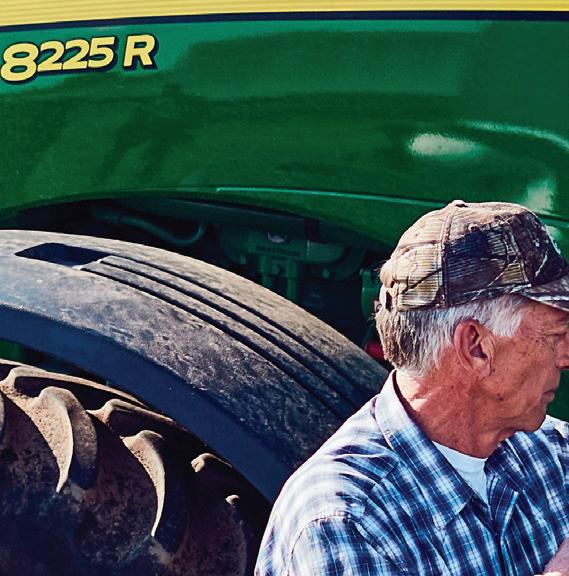






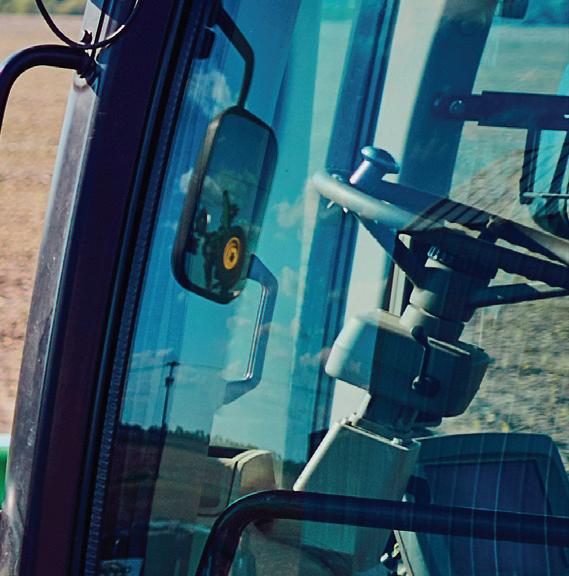





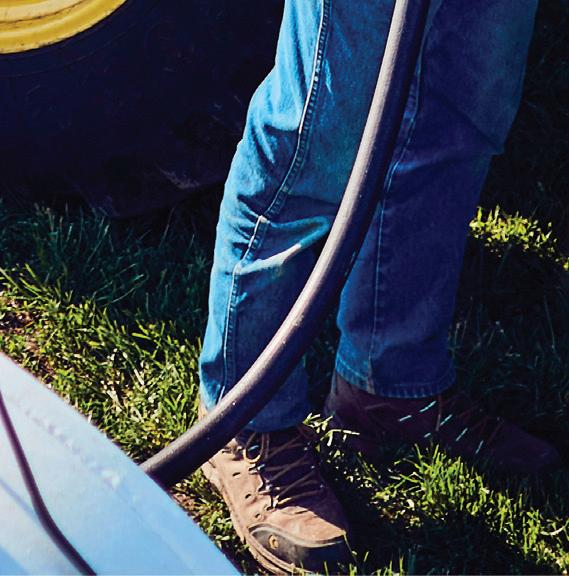





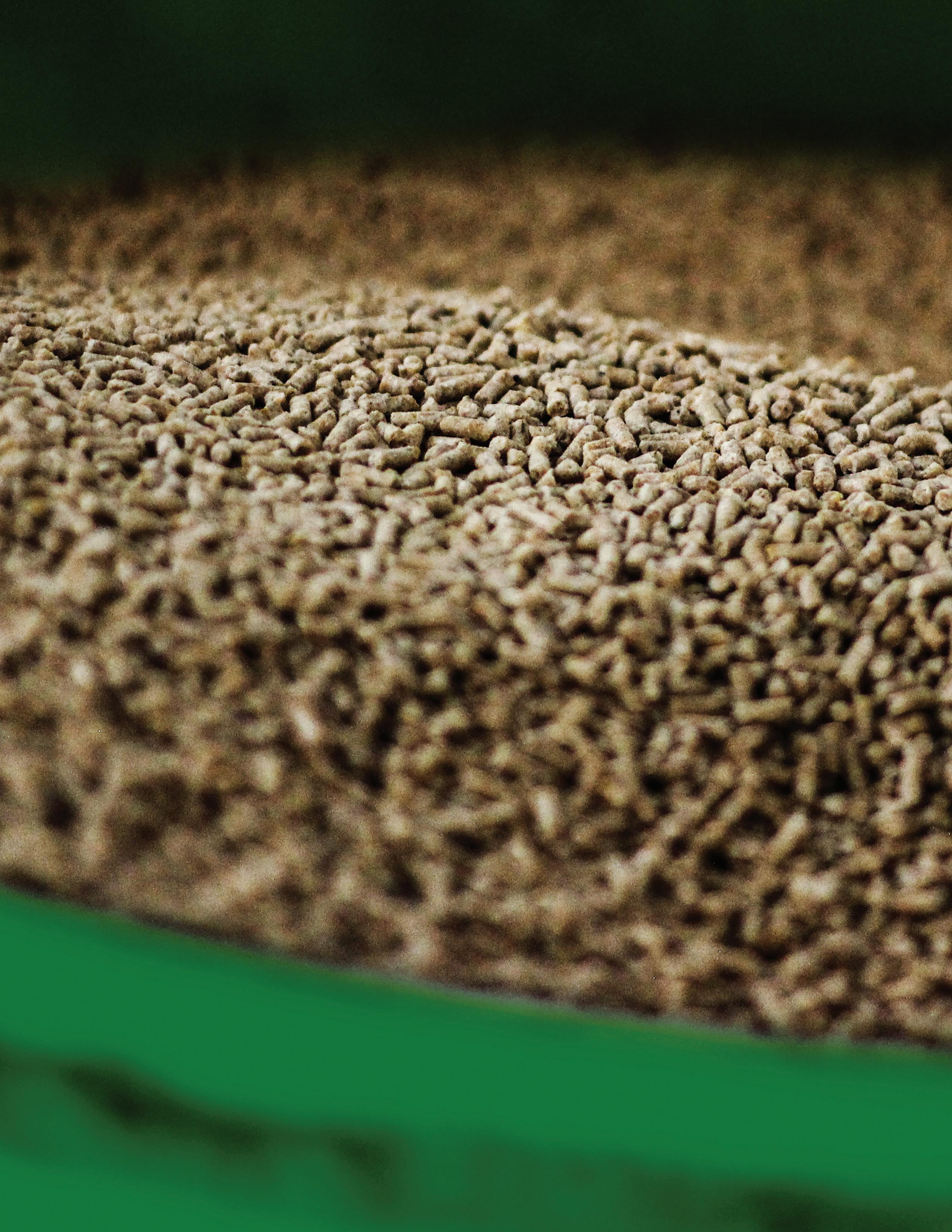

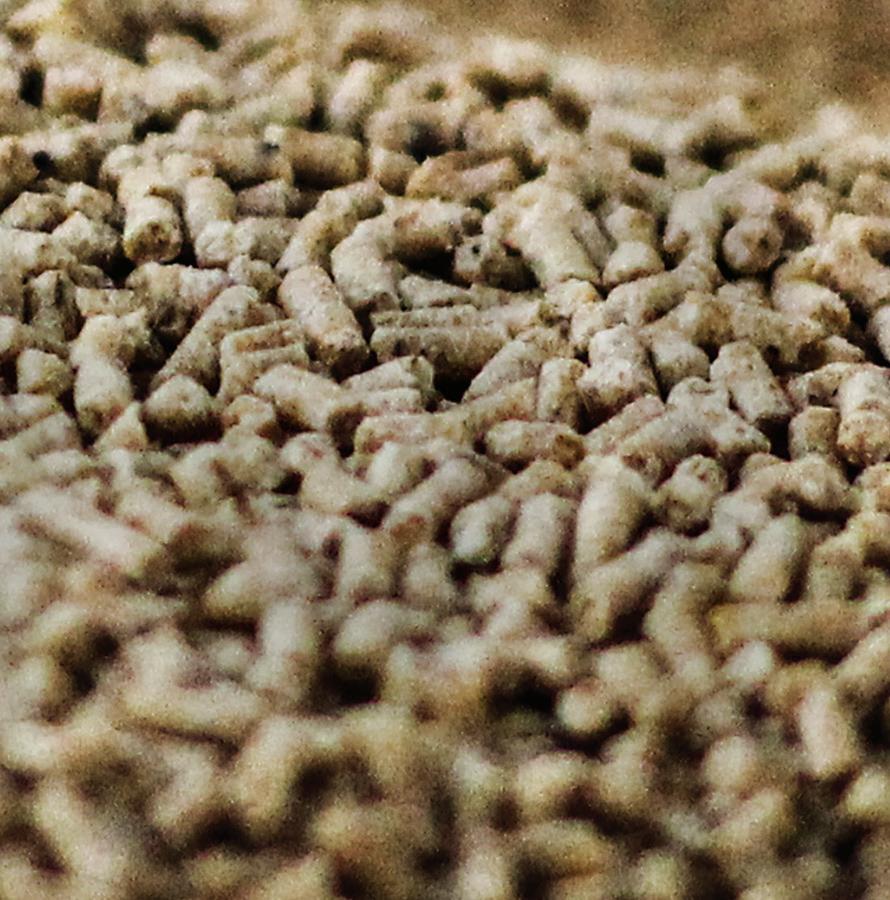




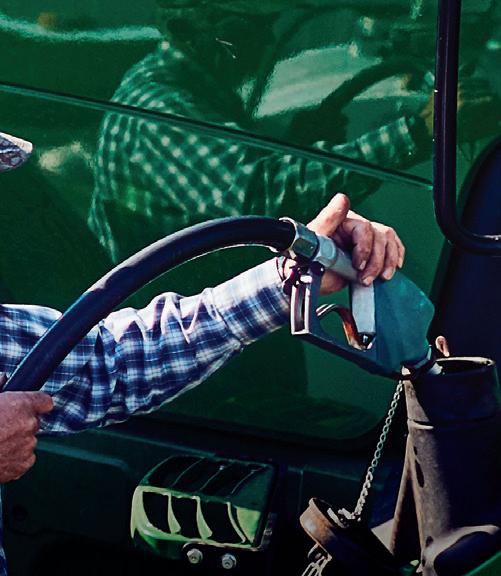




































































Patrick Knou
Ohio Soybean Association President Shelby County soybean farmer
Happy New Year to all! After serving as first vice president and vice president for the past two years, I am honored to move into the president role for 2022–2023. I would like to thank my fellow board members for trusting me with this position and its leadership responsibilities for the coming year. Furthermore, I would like to thank Ryan Rhoades of Marion County for his leadership as president over the past two years and I look forward to working with him as board chairman.
At the OSA December board meeting, new officers were elected for the 2022 executive committee. Rusty Goebel of Williams County was elected as the vice president, Jerry Bambauer of Auglaize County was elected as treasurer and Trish Cunningham of Union County was elected as secretary. You can read more about the newly appointed executive team on page 10.
Over the past 12 months, we never let our foot off the gas when advocating for the soybean industry. We began the year by preparing and speaking with new legislators in the General Assembly, followed by attending the virtual 2021 Commodity Classic (discount information for 2022 Commodity Classic on page 10), Ohio Grain Farmers Symposium and hosting corporate partner and sponsor events. Our year in review can be found on page 6.
Over the next 12 months, we will be trying something new with our magazine. Each issue will be themed around a particular topic relevant to the soybean industry. This issue is centered on the biodiesel industry, including renewable diesel, BioHeat, and sustainable aviation fuel. OSA works closely with the National Biodiesel Board (NBB) as they advocate for the biodiesel industry on Capitol Hill (see page 12 for a brief history of biodiesel legislation in Ohio). Our sister organization, the Ohio Soybean Council, also works closely with NBB’s checkoff-funded efforts to promote biodiesel. Cindy Layman from Hardin County represents Ohio on the NBB Board of Trustees.
Furthermore, OSA created a new membership model that can accommodate you and your operation’s needs. I would compare it to a cell phone plan—you can get a membership for the whole family! Your membership is vital to the success of our organization and allows us to advocate for policies that will protect and benefit soybean farmers for generations to come. If you are already a member, consider reaching out to your OSA district representative to get a feel for what we are working on and how you can help. Visit www.soyohio.org/membership to learn more.
Thank you for reading the Ohio Soybean News and I look forward to serving as your OSA President for the next two years!
President
Patrick Knou , Shelby County
Vice President
Rusty Goebel, Williams County
Treasurer
Jerry Bambauer, Auglaize County
Secretary
Trish Cunningham, Union County
Chairman
Ryan Rhoades, Marion County
Trustees
Justin Esselburn, Holmes County
Caitlyn Heimerl, Industry A liate Ex-O cio
Je Magyar, Ashtabula County
Je McKanna, Hancock County
Bennett Musselman, Pickaway County
Derek Reusser, Holmes County
Andy Stickel, Wood County
Bob Suver, Clark County
Kerrick Wilson, Preble County
American Soybean Association
Board Representatives
Jerry Bambauer
Scott Metzger
Sta Credits
Kirk Merritt - Publisher
Julia Brown - Editor
Madi Layman - Sta Writer
Brent Warren - Art Director
Barry Falkner - Photo Quality/Proofer
Patrick KnouOhio Soybean news is published six times a year by the Ohio Soybean Association, 918 Proprietors Rd., Suite A, Worthington, OH 43085. Phone: 614-476-3100. For address corrections contact Ohio Soybean News at 918 Proprietors Rd., Suite A, Worthington, OH 43085.
Web address: www.soyohio.org E-mail: cdeboard@soyohio.org
Comments and statewide news articles should be sent to the above address. Advertising space reservation must be made by the rst of the month preceding publication. In consideration of the acceptance of advertisement, the agency and the advertiser must, in respect of the contents of the advertisement, indemnify and save the publisher harmless against any expense arising from claims or actions against the publisher because of the publication of the content of the advertisement.
For Advertising Sales Contact: Matt Herman - (612) 812-5833
matt.herman@dtn.com
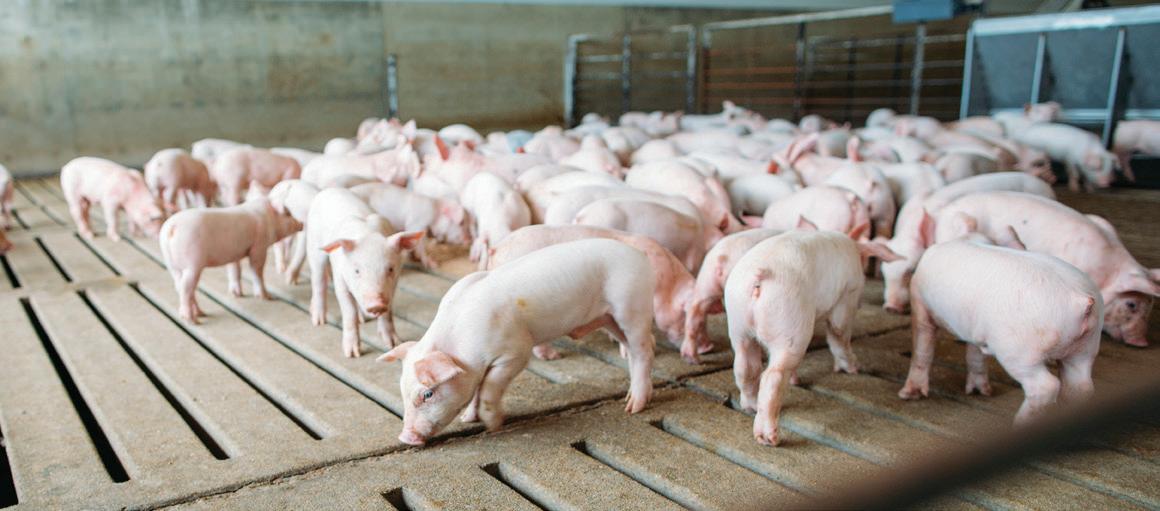


•
• No Yield Drag
• Added Value for Culinary and Livestock Markets

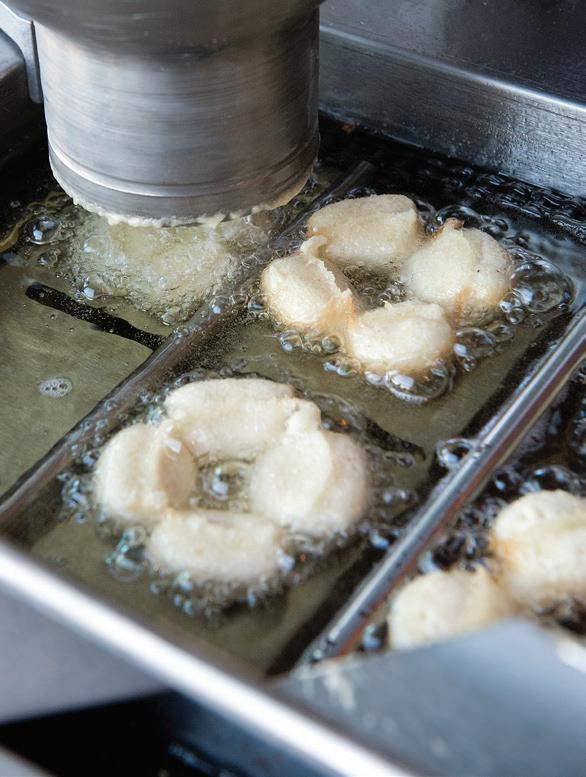




year of “returning to normal,” Ohio Soybean Association and its farmer leaders never stopped working:
January — New Year, New Faces
OSA started preparing for the year ahead of us, bringing with it a new Presidential administration and new faces to both the General Assembly and Congress.
February — Commodity Classic
Ten volunteer farmer leaders represented Ohio soybean farmers to help shape 2021’s national policy agenda at the virtual Commodity Classic. Delegates were: Jerry Bambauer (Auglaize County), Trish Cunningham (Union County), Bret Davis (Delaware County), Rusty Goebel (Williams County), Patrick Knouff (Shelby County), Ryan Rhoades (Marion County), Jeff McKanna (Hancock County), Scott Metzger (Ross County), Bob Suver (Clark County) and Jennifer WilsonOechsle (Van Wert County).
March — Advocacy
Legislative action started to heat up as OSA continued to meet with new legislators in the General Assembly and state budget talks started. OSA also began testifying on the beginning farmer income tax legislation sponsored by Representative Susan Manchester.
April & May — Growing Partnerships
As farmers started planting their fields, OSA worked with our members and corporate partners to grow our program.
June — Carbon Market Website
Jointly with the Ohio Soybean Council, the OSA launched a onestop-shop website with information on carbon market opportunities. The website was created to act as a
clearinghouse for all the available carbon market information and simplify the comparison process for Ohio farmers. The information is available by visiting www.soyohio.org and clicking on the “Carbon Markets” tab at the top.
Top picture: Congressman Troy Balderson visited Airable Research lab at Ohio Wesleyan University in Delaware, Ohio with OSA President Ryan Rhoades.
Bottom picture: OSA held their annual Harvest Classic golf outing to support lobbying and membership e orts.
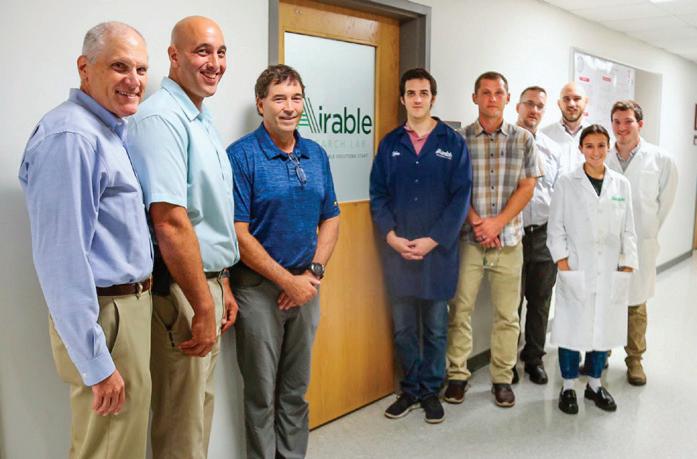

A month of policy wins for Ohio soybean farmers — the state’s budget included continued funding for H2Ohio, OACI shared successes with the Ohio House Agriculture and Natural Resources Committee and OSA applauded the Senate passage of the Growing Climate Solutions Act.
August — Airable Research Lab
Congressman Troy Balderson visited
Airable Research Lab, a lab dedicated solely to developing innovative new uses for soybeans. Airable Chief Lab Officer Barry McGraw and Ohio Soybean Association President Ryan Rhoades explained the value of the lab to soybean farmers and the soybean value chain.
September — Harvest Classic
OSA held their annual golf outing fundraiser in Delaware, Ohio. This event helps support our lobbying and membership efforts. A portion also goes to our PAC. Thank you to everyone who supported or attended this event!
October — Midwest Soybean Collaborative
The OSA officially joined the Midwest Soybean Collaborative, a coalition of leading soybean-producing states committed to expanding agricultural solutions through innovative thinking and programming on issues identified as having the most significant impact on the success of soybean growers across the Midwest.
November — Meeting with Legislators
At their November board meeting, board members had the opportunity to meet with their legislators to advocate for OSA and soybean farmers in Ohio. Legislators included Senator Andy Brenner (R-Delaware), Representative Susan Manchester (R-Lakeview), Representative Jon Cross (R-Kenton), and Representative Mark Johnson (R-Chillicothe).
December — Grain Farmers Symposium
Returning to an in-person event, Ohio Grain Farmers Symposium was in Plain City, Ohio. The event featured Terry Cosby, Chief of the Natural Resources Conservation Service; Ben Brown from the University of Missouri; and Matt Herman from the National Biodiesel Board. u




Whether shipping by river, road or rail, the soy checkoff is committed to ensuring America’s infrastructure is a significant advantage for U.S. soybean farmers. We’re looking inside the bean, beyond the bushel and around the world to keep preference for U.S. soy strong. And it’s helping make a valuable impact for soybean farmers like you.
See more ways the soy checkoff is maximizing profit opportunities for soybean farmers at unitedsoybean.org


Farmers and commodity group leaders gathered from across the state to attend the 2021 Ohio Grain Farmers Symposium in Plain City, Ohio to discuss the business of the Ohio Corn & Wheat Growers Association (OCWGA) and the Ohio Soybean Association (OSA). Both organizations conducted their respective annual meetings, and a Presidents Leadership Panel provided updates from both associations’ presidents and executive directors.
Featured topics during the Symposium included tax policy and American agriculture in 2022 with
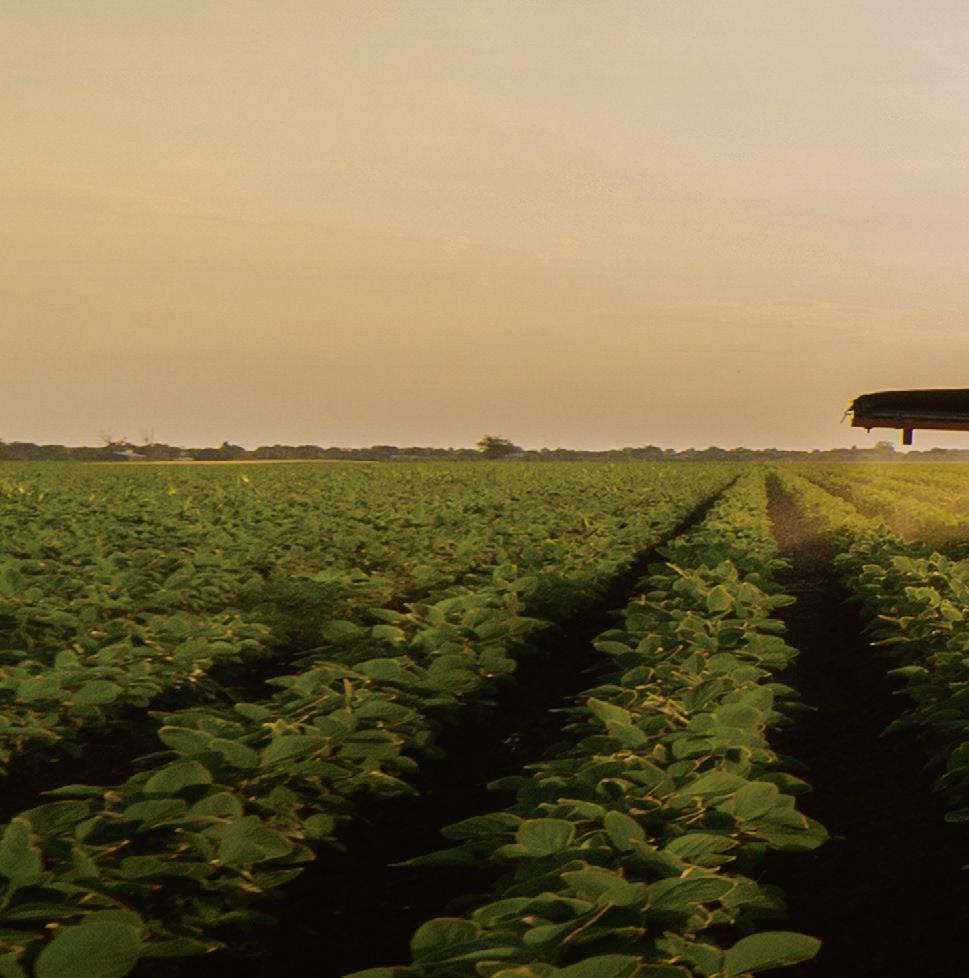
President and CEO Jay Truitt of Policy Solutions and supply chain issues, labor shortage, grain markets and some 2022 predictions with Ben Brown, senior research associate and agricultural economist at the University of Missouri.
Truitt encouraged farmers and the commodity groups to remain involved in the discussions and interacting with national legislators. “We have great lobbyists, and they do a really good job, but there is no one that is a better lobbyist than the farmer that has a relationship with the legislators and folks in Washington,” Truitt said.
Brown shared an analysis of the status of the supply chain and labor shortage. “One of the biggest demographics we have seen leave
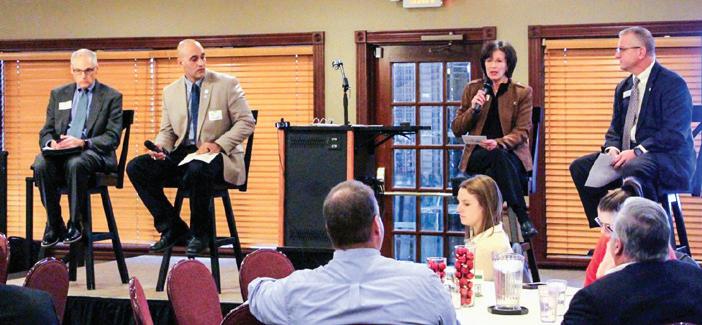
Ohio Soybean Association and Ohio Corn and Wheat Grower Association leadership talk about 2021 successes and 2022 plans.
the workforce is Baby Boomer-age workers. Several of them retired early due to a favorable economy with their retirement investments and the strong housing market,” Brown said.
The full recap of the 2021 Ohio Grain Farmers Symposium can be found at ocj.com u


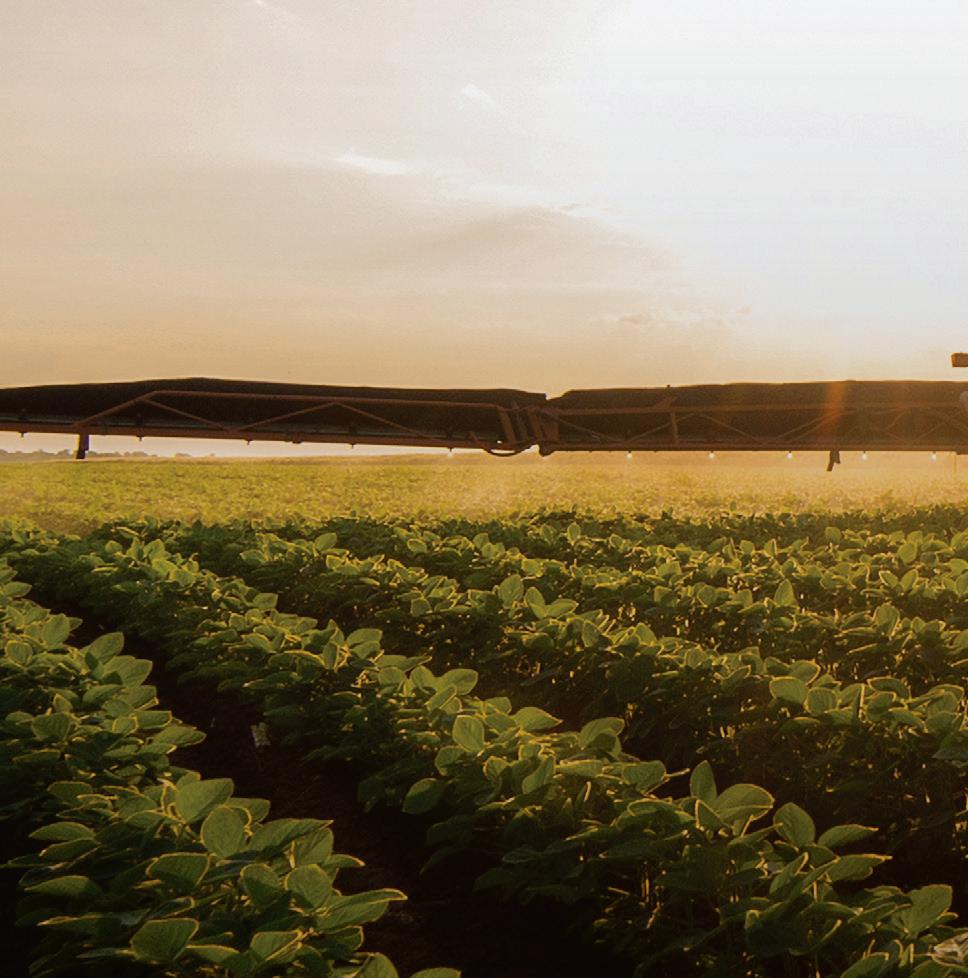












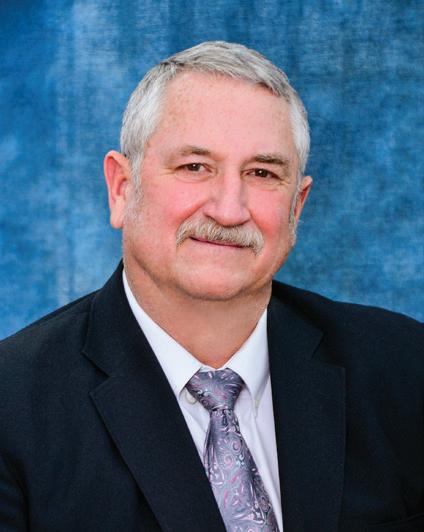


PRESIDENT
The new OSA Board of Trustees President is Patrick Knouff of Shelby County. Knouff previously held the position of vice president and is moved into the president role. He represents District 7 which includes Auglaize, Mercer, Miami and Shelby counties. Knouff previously served as Ohio Soybean Council chairman, vice chairman, treasurer and secretary.
VICE PRESIDENT
The OSA Board of Trustees elected Rusty Goebel of Williams County as the new vice president. Goebel is the representative for District 1 which includes Fulton, Henry, Lucas and Williams counties. He served as OSA’s treasurer.
TREASURER
Jerry Bambauer of Auglaize County

was elected to serve as OSA’s treasurer. Bambauer also serves on the American Soybean Association Board of Directors, and the Ohio Soybean Council Board of Trustees.
SECRETARY
Trish Cunningham of Union County was elected as OSA’s new secretary. Cunningham previously participated in ASA’s Corteva Young Leader Program, a leadership-training program designed for soybean farmers who are interested in developing their skills to represent the ideals of soybean farmers domestically and internationally and to pursue leadership positions at the state or national level .
Ryan Rhoades of Marion County retired his position as OSA president
and is now filling the role of OSA chairman. Rhoades represents District 9 which includes Delaware, Marion, Morrow and Union counties. He joined the OSA board after serving as a Beck’s Young Farmer Leader, a program that recognizes young Ohio soybean farmers for their leadership and dedication to the soybean industry.
Finally, OSA thanks Bret Davis of Delaware County for his tremendous dedication and leadership when advocating for Ohio soybean farmers. Davis served on OSA’s board from 2006–2021 and held the positions of chairman, president, vice president, first vice president and treasurer. He also served as the American Soybean Association (ASA) representative from 2013–2021, including serving on the Governing Committee. u









The Ohio Soybean Association has been a long-time advocate for biodiesel, diesel fuel made with a combination of soybean oil, recycled cooking oil and animal fats. In 2005, soybean oil use for biodiesel was just 675,000 pounds. Biodiesel consumption in 2017 required 6.2 billon pounds of soybean oil or the oil from 532 million bushels of soybeans. As we look to the future of biodiesel and the expansion of the renewable diesel market, we decided to look back on what the policy of biodiesel has been in the state of Ohio.
In 2006, the Ohio Environmental Protection Agency (EPA) established the Clean Diesel School Bus Fund. The program ran from 2006–2015 and awarded grants to school districts and county developmental disability programs to retrofit diesel school buses with pollution controls and idle reduction equipment. The program sought to reduce student and driver exposure to the harmful pollutants in diesel exhaust and to conserve fuel. The program was discontinued in 2016 because there are so few school buses left of eligible model years (1996–2004) that would continue in service for the required four years after retrofit.
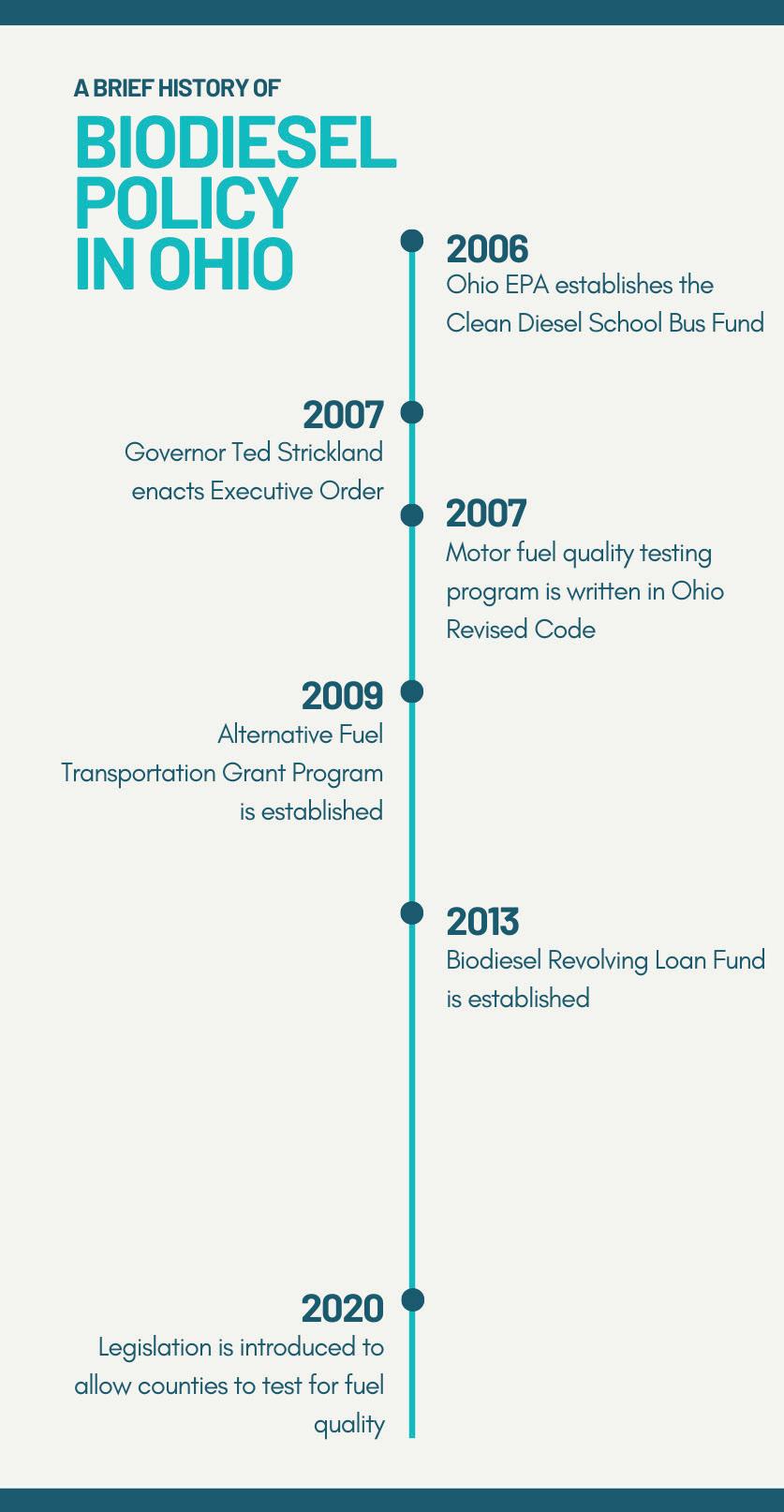
fuels that use vegetable oil or animal fats. In addition, the executive order stated that use of biodiesel must increase to 25% by January 1, 2008 or sooner.
In January 2007, as one of his first acts as Governor of Ohio, Ted Strickland issued an executive order that would establish more fuel pumps for state vehicles that dispense E-85, a mix of gasoline and corn-based ethanol, as well as biodiesel
After several previous legislative attempts, law was established in 2007 for the Ohio Department of Agriculture (ODA) to create a fuel quality testing program. The legislative vehicle for this law was House Bill 67, the Transportation Budget, for the 127th General Assembly.
This law is still on the books today, but ODA never implemented a program due to lack of funding and a change in the administration.
House Bill 59 of the 128th General Assembly, the Alternative Fuel Transportation Grant Program, was established to encourage the use of alternative fuels. It permitted the state to make grants for the purchase and installation of alternative fuel refueling or distribution facilities and terminals; purchase and use alternative fuels; and pay the costs of education and promotional materials and activities intended for prospective fuel consumers, fuel marketers, and others. This law is currently still on the books today.
Also required under House Bill 59 was that all new motor vehicles acquired by the state and used by state agencies be capable of using alternative fuels, including blending biodiesel. State agencies must use the relevant alternative fuel if it is reasonably priced and available.
The Biodiesel Revolving Loan Fund was created in 2013 with the purpose of funds being used to pay for the incremental cost of biodiesel for use in vehicles owned or leased by the state that use diesel fuel.
After ODA failed to establish a statewide fuel quality testing program, counties wanted to be able to create their own programs. Bipartisan legislation was introduced in 2020 to do this but has not been passed by the General Assembly. u
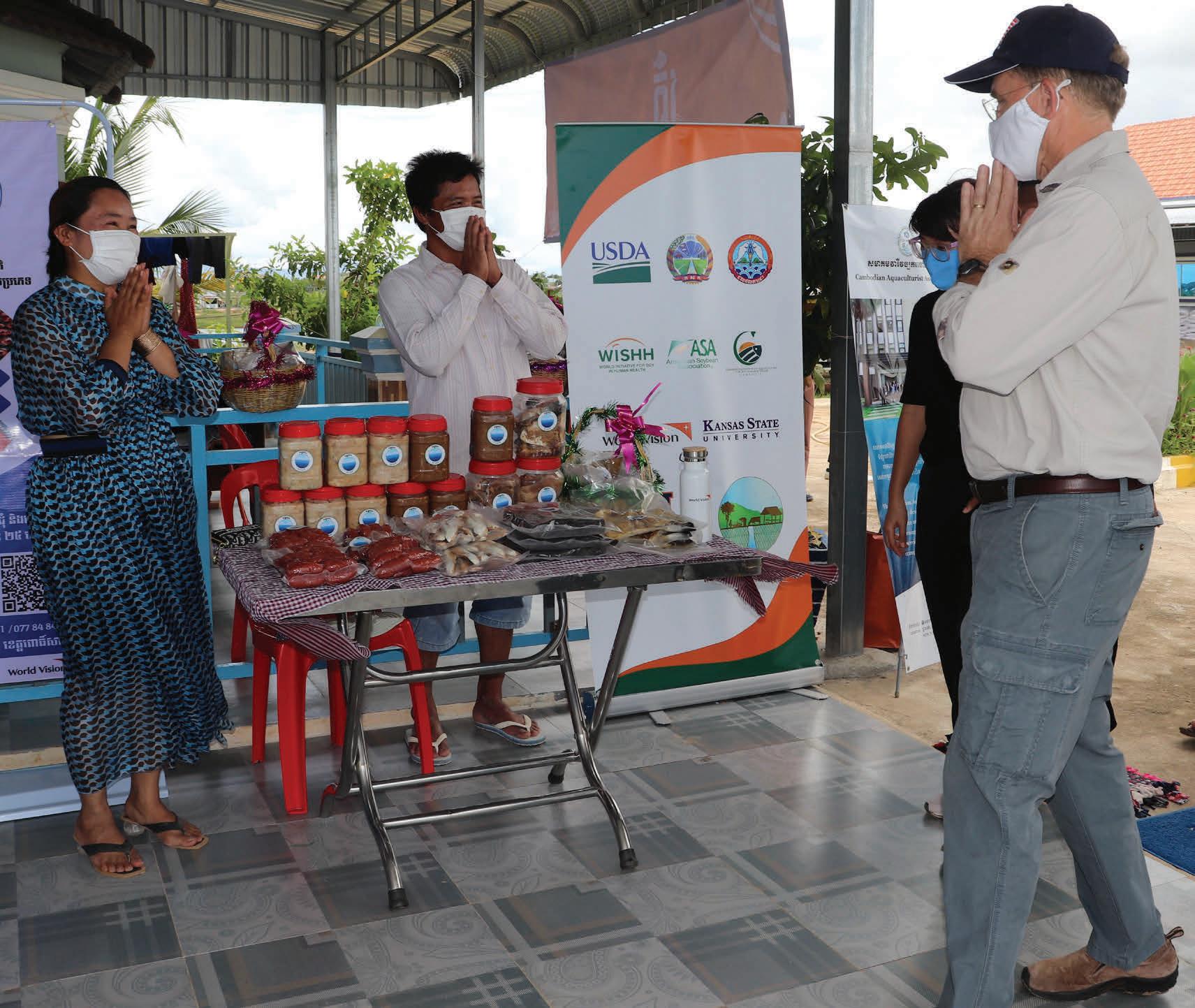



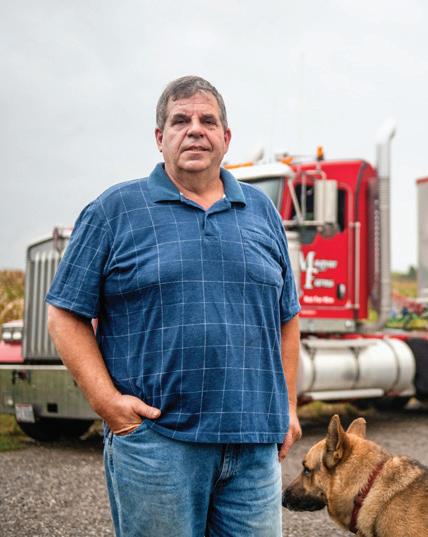


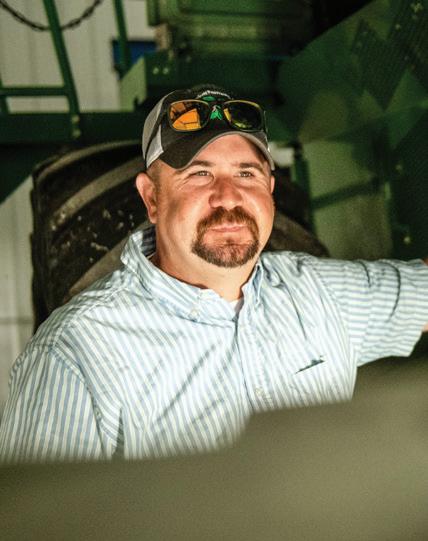

The Ohio Soybean Council Board of Trustees elected a new executive team at their annual meeting in November. The newly elected Chairman Jeff Magyar of Ashtabula County will be working with newly elected Vice Chairman Bill Bayliss of Logan County, Treasurer Cindy Layman of Hardin County and Secretary Nathan Eckel of Wood County.
“We have a strong team of leaders on the Ohio Soybean Council Board of Trustees for 2022,” Magyar said. “I am honored to be serving as the Council’s new chairman and appreciate their trust in my leadership for this
upcoming year. We are keeping the future of the soybean industry in mind as we invest checkoff dollars in projects that promote research, international trade, education and so much more.”
In addition to the newly elected executive committee, John Motter of Hancock County will be rejoining the board of trustees representing District 5. He is filling the hole of former Chairman Bill Bateson of Hancock County. Bateson term limited off after serving nine years on the board.
Motter farms soybeans and corn in Jenera, Ohio. He served on the board of trustees from 2004 to 2018. During
Bill Bateson for your nine years of leadership on the Ohio Soybean Council Board of Trustees.

those years, he served as chairman, vice chairman, treasurer and secretary. Motter participated on the United Soybean Board as well from 2010 to 2018. He served as chairman, vice chairman and treasurer for their board during that time. u



1
Biodiesel is America’s first domestically produced, commercially available Advanced Biofuel and meets Environmental Protection Agency (EPA) requirements for inclusion and use under both the Advanced Biofuel and BiomassBased Diesel categories of the Renewable Fuel Standard (RFS-2).
2
U.S. biodiesel reduces lifecycle carbon emissions on average 80% compared to petrodiesel, making it the best carbon reduction tool of any liquid fuel commercially available.
3
Biodiesel has the highest energy balance of any commercially available U.S. fuel.
4
Biodiesel is produced from a variety of renewable resources, such as plant oils, animal fats, recycled grease, and even algae, making it one of the most sustainable fuels on the planet. And with biodiesel, you don’t sacrifice food for fuel. Oils and fats for biodiesel are a minor by-product of producing high-protein feeds (soybean meal) and quality meats.
5
Biodiesel production reduces our dependence on foreign oil from unstable parts of the world, while expanding and diversifying our domestic refinery capacity.
6 Biodiesel is biodegradable, non-toxic, burns much cleaner than petrodiesel and is better for your health. Compared to petrodiesel, biodiesel reduces black smoke (particulates), carbon monoxide, and harmful unburned hydrocarbons that cause smog.
7 Biodiesel helps our U.S. economy and improves our balance of trade.

Using biodiesel creates added outlets for farm-based products and high paid manufacturing jobs in rural parts of our country.
8
Using biodiesel is easy! B20 and lower blends are a drop-in replacement for petrodiesel. They can be used in any diesel vehicle without modification, according to manufacturers’ recommendations, and dispensed through existing fueling stations. For a listing of original equipment manufacturer (OEM) position statements on biodiesel, visit www.biodiesel.org/ using-biodiesel/oem-information
9 Biodiesel production is guided by stringent American Society for
Testing and Materials (ASTM) fuel specifications, developed through years of testing. ASTM D6751 is the standard for B100 biodiesel for use as a blend stock with petrodiesel; ASTM D7467 is the standard for B6-B20 blends. The diesel fuel specification ASTM D975 also includes an allowance for up to 5 percent biodiesel as part of the standard diesel fuel pool.
10 The biodiesel industry has an excellent fuel quality program called BQ-9000 (www.bq-9000.org). BQ-9000 Certified Biodiesel Producers, Marketers, Retailers and Laboratories help ensure that only the highest quality biodiesel meeting ASTM specifications gets put into your fuel tanks. u



 TBy Floyd Vergara, Director of State Governmental Affairs, National Biodiesel Board
TBy Floyd Vergara, Director of State Governmental Affairs, National Biodiesel Board
here is little doubt that Earth’s climate is changing. And science points to those changes primarily being driven by increased levels of carbon dioxide (CO2) emissions into the atmosphere from transportation, industry and power generation. Time is of the essence as original equipment manufacturers (OEMs) and fleets across the country consider a variety of emissions reduction technologies such as biomass-based diesel fuels, electric vehicles and other alternatives to help slow the progression of climate change. However, while viable electric solutions are still being developed, biomassbased diesel fuels such as biodiesel and renewable diesel are already delivering both emissions reductions and public health benefits today and will continue to do so well into the future.
California deserves its reputation as a world leader in addressing climate change, so it made a fitting venue for the 2021 Advanced Clean Transportation (ACT) Expo, held in Long Beach from August 30 to September 2, 2021. The ACT Expo featured a wide variety of clean vehicle technologies on display, including a Class 8 truck from National Biodiesel Board member company Optimus Technologies, powered by 100 percent biodiesel.
However, many California residents believe the state’s laser focus on climate change has come at the cost of its original mission — protecting the health of its citizens. As someone who has been dedicated to improving air quality and reducing carbon throughout
my career, I believe strongly it doesn’t have to be one or the other. In addition to pursuing long-term decarbonization strategies like deep electrification, California, and indeed the rest of the nation, should employ drop-in solutions now that can immediately improve the health of its citizens — particularly those in historically disadvantaged communities. Increasing the use of biodiesel and renewable diesel would help accomplish this important goal sooner versus later.
I grew up in downtown Los Angeles, where like many others I suffered “stage 3” smog alerts. As an adult, I found purpose in a 30-year career with the California Air Resources Board (CARB), where I helped develop programs including the Low Carbon Fuel Standard (LCFS). As the concept of Environmental Justice began to emerge, I visited many disadvantaged communities hit disproportionately hard by emissions — such as those surrounding the Ports of Los Angeles and Long Beach — and it wasn’t hard for me to relate.
Environmental Justice (EJ) represents a paradigm shift in governance, reflecting a growing recognition that the benefits of efforts like decarbonization have not been applied equally. We have communities historically over-burdened with environmental problems, with many located near pollution sources. Environmental Justice is about leveling the playing field and reducing the burden for those communities.
Every family I talked with during these EJ engagements either suffered from asthma or cancer or had a direct relationship with someone else who did. Particularly around the ports, the question was always, “Why can’t you do something about the trucks?” Residents near the ports deal with miles-long lines of trucks idling in or around their neighborhoods continuously. Those
residents get exposed to the worstpolluting trucks.
Pollution is literally a life-or-death situation, and it is not just an issue in the ports. Yet residents of disadvantaged communities are told by the state to just wait. Electrification is coming, they hear. Perhaps that’s true, but if an EV future comes to fruition, it is likely decades away. When you look at the largest tractortrailer trucks our economy so relies on, currently 97 percent of those trucks are powered by diesel engines. Even CARB estimates no more than about 20 percent of those would be electrified by 2040.
The good news is that there are other tangible solutions readily available now, not years or decades away. Take biodiesel and renewable diesel, for example. Under LCFS, California has already begun to embrace these diesel replacements, which play a critical role in our climate effort. Made from an increasingly diverse mix of resources such as recycled cooking oil, plant oils and animal fats, biodiesel and renewable diesel are better, cleaner fuels that are available now for use in existing diesel engines, and they make up almost half of our LCFS carbon reductions. That’s the equivalent to removing 1 million vehicles off the road.
These advanced fuels are not simply good for addressing climate change; they also improve local community health. A new study from Trinity Consultants demonstrates that switching to biodiesel results in an array of health benefits at the neighborhood level, including decreased cancer risk, fewer premature deaths and reduced asthma attacks. The study, sponsored by the National Biodiesel Board, used well-established Environmental Protection Agency and CARB air dispersion modeling tools. They were coupled with health risk assessments and benefit valuations to assess the public health benefits and resulting
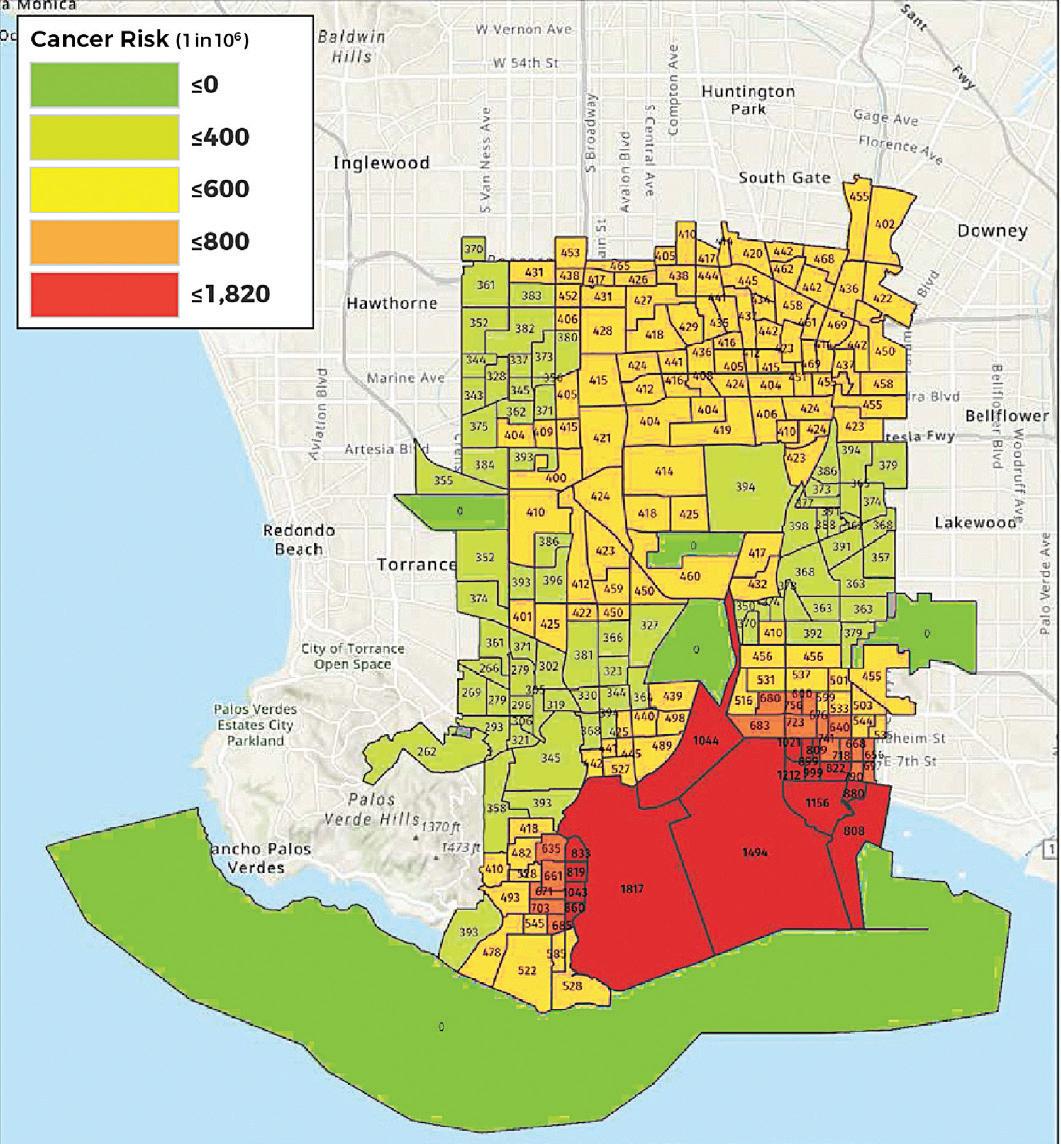
economic savings of converting from petroleum-based diesel to 100 percent biodiesel, known as B100. The study focused on 13 sites and communities in the U.S. exposed to high rates of petroleum diesel pollution. In California, those sites included the ports of Los Angeles and Long Beach, West Oakland, South Fresno and San Bernardino.
Researchers found that switching to 100 percent biodiesel for transportation, as well as home heating oil used mostly on the East Coast, would annually bring the 13 communities studied:
340 fewer premature deaths
46,000 fewer lost workdays
$3 billion in avoided health care costs
In the transportation sector, benefits included a potential 45 percent reduction in cancer risk when heavy-duty trucks such as semis use B100, and 203,000 fewer or lessened asthma attacks.
The study also considered the economic cost of premature deaths, asthma cases, reduced activity due to poor health and work impacted due
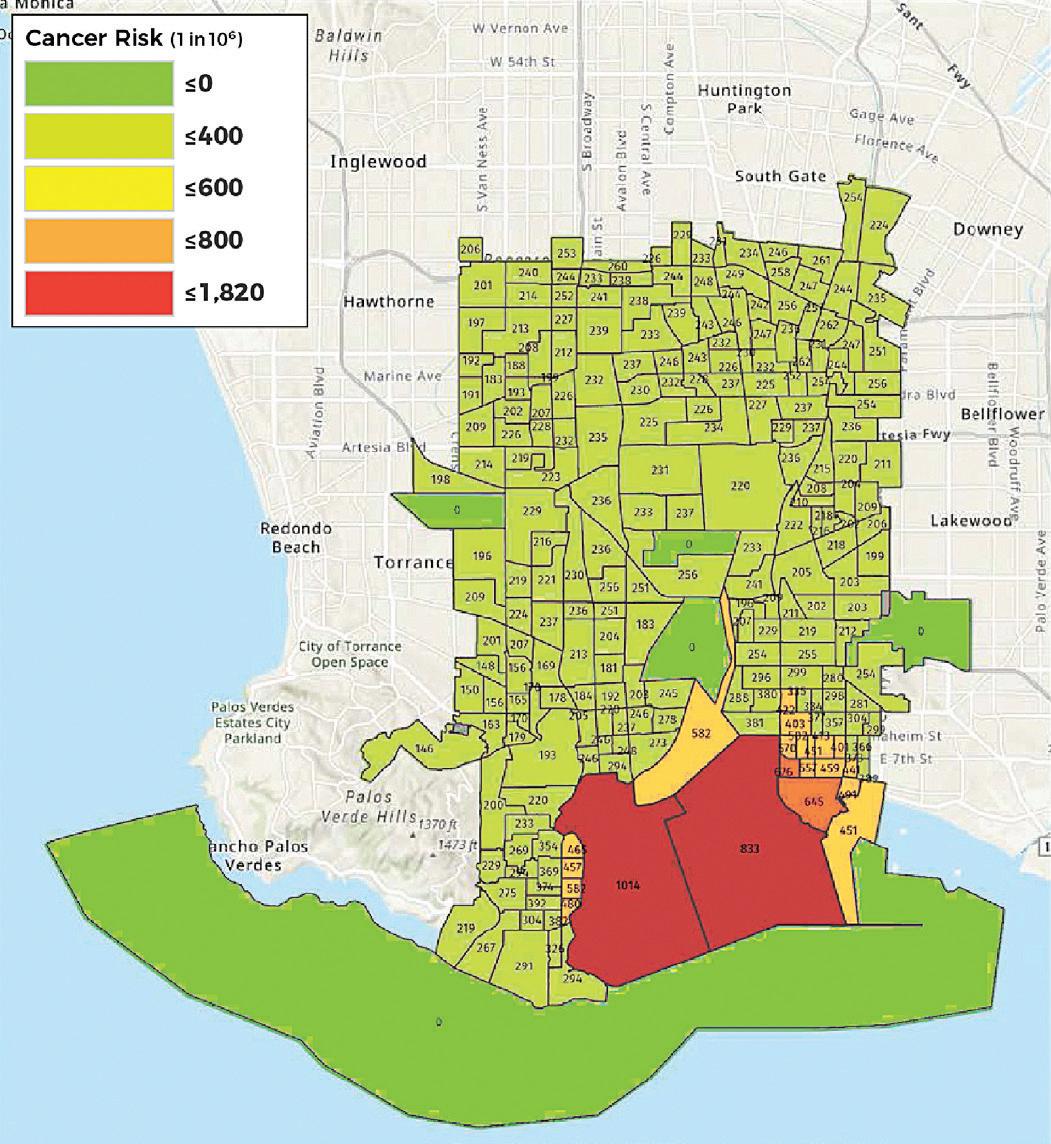
to sick days. For example, researchers found the communities surrounding the Port of Los Angeles/Long Beach would avoid about $1.69 billion in health costs each year due to improved air quality in the form of reduced premature deaths and health care costs, and increased productivity.
As these numbers represent findings from just 13 sites and communities, they are truly the tip of the iceberg. Also, the benefits quantified can be extrapolated to other blends of biodiesel and to similar sites in California and around the country.
With states increasingly focusing on electrification as a primary strategy for decarbonization, this study shows the importance of a holistic decarbonization plan that includes other low carbon alternatives. The LCFS has garnered a high degree of success, largely with the help of biodiesel and renewable diesel replacing more diesel fuel in the state of California. On average, these fuels
The Trinity Consultants study with NBB found that by replacing petroleum diesel with low-carbon biodiesel, Long Beach can eliminate harmful transportation emissions, reducing medical costs and healthcare burdens.
comprised 24 percent of each gallon of diesel fuel consumed in 2020 in California. But we can do even more to help hard-hit communities in California and across the nation. States should engage all available instruments to max out the amount of biodiesel and renewable diesel they can use, especially in Environmental Justice communities. By using renewable fuels like biodiesel and renewable diesel, we bring positive change to people’s lives and their health, all while benefiting our climate and economy, too.
For more information and to view results from the Trinity Consultants study, visit www.biodiesel.org and www.bettercleanernow.com u
Ohio’s leadership
#7
in the nation for soybean production in 2020.
Economic Indicators
1,573
#6
among top six in biodiesel use in 2018.
#10
among top 10 in biodiesel production in 2018.
Economic Drivers
Jobs supported by Ohio biodiesel production.
65.1M $806M Economic activity supported by Ohio biodiesel production.
62.3M
Ohio’s average annual biodiesel use from 2013-2018 (in gallons).
Ohio produced more than 65 million gallons of biodiesel in 2018.
Ohio’s Clean Fuels
4,696
846,566
7,469T
Over 4,600 fleet vehicles in Ohio run on biodiesel. Good for Ohio’s Economy Good for Ohio’s Environment
Ohio fleets used over 840,00 gasoline equivalent gallons in 2019.
Ohio's clean fuel use reduced carbon emissions by over 7,000 tons in 2019.
209.2M
18
33
biodiesel producers with 75 million gallons of capacity. 2
Ohio grew 270.6 million bushels of soybeans in 2020. Biodiesel adds 13% in value to every bushel of soybeans.
Biodiesel is available from 18 Ohio fuel distributors.
Biodiesel is sold at 33 retail stations throughout the state.
Bioheat® Opportunities
114,000+
There are more than 114,000 oil-heated homes in Ohio.
Ohio consumers get their heating oil from 183 independent retailers that collectively employ 585 individuals and have an annual payroll of $22 million.
Ohio used 63 million gallons of heating oil in 2018.
Statewide use of B20 Bioheat Plus® fuel blends would replace 12.6 million gallons of Ohio heating oil with cleaner, greener biodiesel.
B20 Bioheat Plus® fuel would eliminate approximately 237 million pounds of carbon dioxide emissions from Ohio’s buildings sector. 2



Biodiesel rocks and it keeps America rollin’. With just a phone call, you can add biodiesel to your operation and support a local business. Benchmark Biodiesel is one of several biodiesel distributors in the nation and located right here in central Ohio.

Around 2007, Page Thorson and her husband Wade founded Benchmark Biodiesel on the west side of Columbus. Up until then, there was biodiesel production in Ohio but not a lot of distribution.
“We saw this gap between soybeans being crushed into biodiesel and getting biodiesel to the actual tanks of the truck,” Thorson said. “The producers [of biodiesel] didn’t have the infrastructure to get it delivered or blended, the blending is a huge deal.”
Benchmark Biodiesel’s fuel terminal is designed to blend winter-blend B20 biodiesel (20 percent biodiesel, 80 percent diesel) and equipped to blend in all weather conditions. Thorson said they only use distilled biodiesel in their blending because it removes anything that would cause the biodiesel-diesel mixture to gel. Thanks to this, they can produce a very low temperature fuel that can stay in fuel tanks during the winter without concern.
“The firetrucks and snowplows in Columbus run on a 20 percent biodiesel blend all winter long because we are able to get this blend to such a low temperature,” said Thorson.
In addition to that, Benchmark produces BQ-9000 quality biodiesel at their terminal, the highest-quality rating for biodiesel. This accreditation
is available to all biodiesel manufacturers, but the companies must pass a rigorous review and inspection of their quality control processes by an independent auditor.
The Ohio Soybean Council works with groups like Benchmark Biodiesel, National Biodiesel Board and Clean Fuels Ohio to advocate for the biodiesel industry. These groups then go out to talk to fleets about biodiesel and its benefits.
“I think the Ohio Soybean Council has done a lot for the past, present and future of biodiesel in Ohio,” Thorson
Biodiesel drives demand for soybean oil and increases profit for Ohio soybean farmers.
said. “We found that once fleets are educated about biodiesel, they become consumers of biodiesel. This drives demand for our small business and for farmers because more soybeans are needed as more biodiesel is used.”
To keep America rolling, biodiesel fuels the same equipment used to harvest and transport Ohio soybeans. Benchmark Biodiesel offers delivery and pickup options to both distributors and direct customers. To get biodiesel for your operation, give them a call or visit BenchmarkBio.com
Biodiesel increases the demand for soybean oil which then creates a profit for Ohio soybean farmers. Learn more about the Ohio Soybean Council’s investment into biodiesel at SoyOhio.org/HereWeGrow u
Page and Wade Thorson started Benchmark Biodiesel in 2007 when they saw a need for distribution.
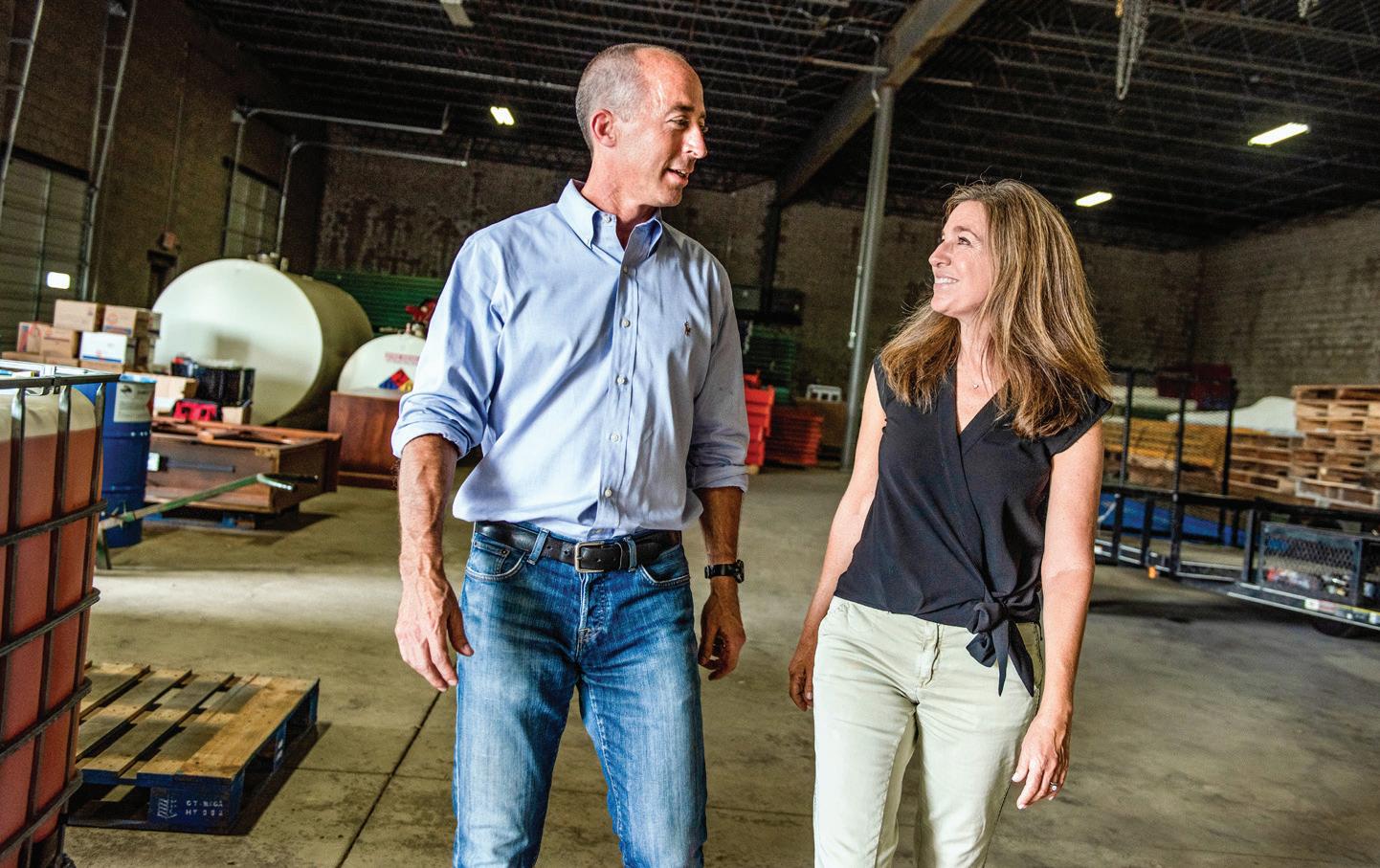


For more than a decade some of our nation’s largest cities — such as New York and Washington, D.C. — have counted on biodiesel to help reduce carbon emissions. Since then, a growing number of fleets across the country have joined these and other early adopters in powering their diesel vehicles and equipment with cleaner-burning biodiesel and renewable diesel. They understand there is no time to waste, and these fuels are here now, ready to go to work reducing emissions and improving public health.
Made from an increasingly diverse mix of resources such as recycled cooking oil, soybean oil and animal fats, biodiesel and renewable diesel are better, cleaner fuels that are available now for use in existing diesel engines without modification. These lowcarbon, low-cost fuels are helping to reduce emissions today from trucks, buses and large equipment. Both are derived from waste feedstocks and their use does not require expensive investments in refueling or recharging infrastructure. The market for these fuels has grown as the U.S. consumed about 3 billion gallons of biobased diesel fuel in 2020 and the market is set to double by 2030.

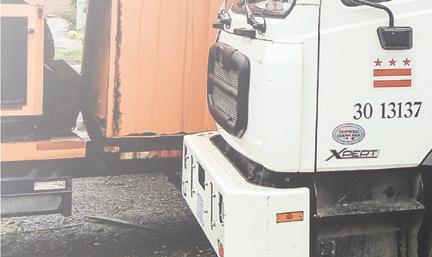


















The pressure is on — both in Washington and in state houses —to shrink our nation’s carbon footprint. While much of the focus has been on developing new technologies of the future, biodiesel and renewable diesel are ready-to-go solutions. These fuels are 74 percent less carbon intensive than petroleum diesel on average and have prevented more than 140 million tons of carbon emissions since 2010. They also substantially cut emissions of particulate matter that impact cancer rates, asthma and other respiratory diseases, which can lower associated healthcare costs.
For dozens of fleet trailblazers across the country, biodiesel and renewable


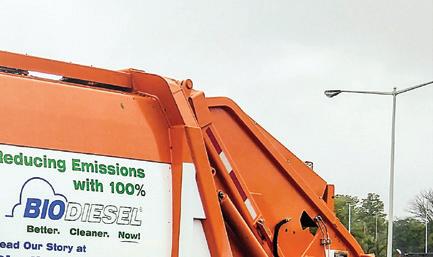
















Biodiesel can be used in existing diesel engines, no alterations required, and it is better for the environment.
diesel are playing a critical role as a major carbon reducer. Many of these leading fleets have earned the National Association of Fleet Administrator’s Green Fleet Award, been named one of the 100 Best Fleets or earned other prestigious awards. Their leadership is gaining momentum and other fleets are watching as they too begin to recognize the role biodiesel and renewable diesel can play right now. There is no need to wait for the next best thing. Fleets can easily transition diesel vehicles and equipment to biodiesel or renewable diesel immediately and begin to realize carbon reduction and public health benefits.
Here are some highlights from leading fleets that have made the switch:
Madison, Wisconsin
“The star of our sustainability show by far, coming in with over 90 percent of our carbon dioxide (CO2) emission reductions over the last few years, is biodiesel,” said Mahanth S. Joishy, Madison fleet superintendent. Madison
uses a B20 biodiesel blend in its 500 diesel vehicles and will soon fuel 20 vehicles with B100. Since 2018, biodiesel has helped Madison reduce carbon emissions by 8 percent.
New York City
The largest municipal fleet in the country powers more than 10,000 diesel vehicles with biodiesel, heats buildings with Bioheat® fuel and also uses renewable diesel. The city’s first biodiesel trial was in 2005. The NYC Clean Fleet plan will increase the use of alternatives to traditional diesel fuels, including higher biodiesel blends, compressed natural gas and renewable diesel, to displace the use of traditional diesel fuel in city vehicles by 2035. These diesel alternatives are estimated to reduce emissions by 34 percent.
Fort Wayne, Indiana
“The City of Fort Wayne has been using a B20 blend to power our fleet for nearly two decades,” said
Larry Campbell, fleet director for Fort Wayne. “We are proud to fuel our vehicles with a product that’s produced locally and burns significantly cleaner than petroleum diesel. On top of that, biodiesel is by far the best carbon reduction tool of any liquid fuel available today. B20 is the easiest thing we can do to reduce emissions. It makes it a no-brainer for me as a fleet director.”
Washington, D.C.
“DPW touches every district resident and visitor, every day,” said Christine Davis, D.C. Public Works interim director. “We are a leader in use of biodiesel fuel, particularly for municipal fleets. We were the pilot for biodiesel trials in the city more than 10 years ago.”
DPW now uses blends up to B100 and plans to double the number of its B100-fueled sanitation vehicles in the next year.
“D.C. Water is the largest wastewater treatment facility in the
world, and we’re the most advanced,” said D.C. Water’s Director of Fleet Management Tim Fitzgerald. “My role here at D.C. Water as the fleet director is to provide the most environmentally friendly, efficient and effective type of vehicles for our fleet. We wanted to make sure that our operators returned home safer. So, we went from B10 to B20, and now we’re at B100, and we’re liking what we’re doing and everybody’s in on the party now.”
Seattle, Washington
Biodiesel and renewable diesel are a fundamental part of Seattle’s carbon reduction strategy. The city’s ambitious Green Fleet Action Plan (GFAP) calls for a 50 percent reduction in fleet greenhouse gases (GHGs) by 2025 and to be fossil fuel free by 2030. Half of Seattle’s emissions reductions will come from replacing petroleum diesel with a blend of biodiesel and renewable diesel. u
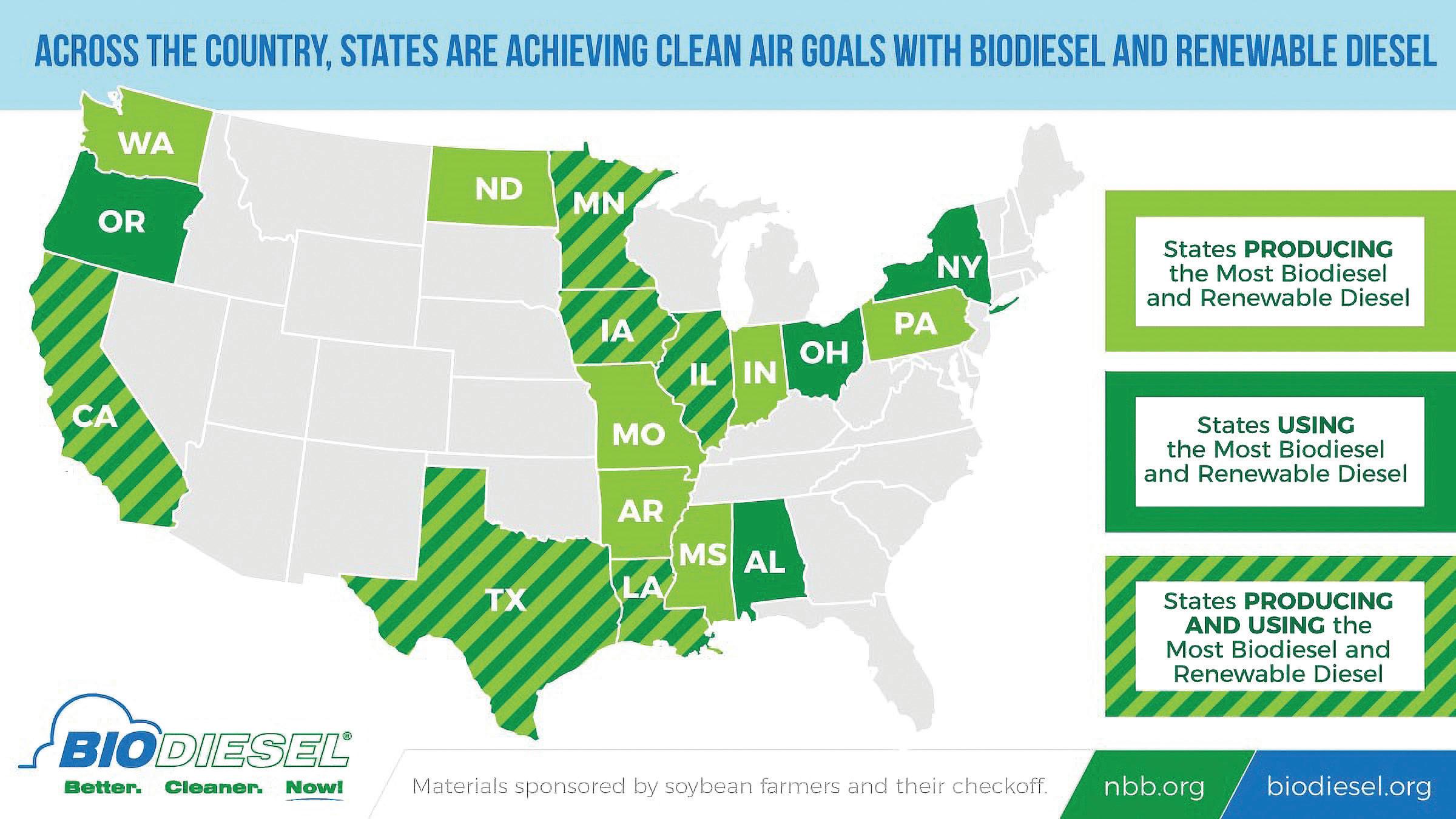









The renewable fuel industry is ever-expanding and changing.
No one knows that more than the National Biodiesel Board (NBB). As the NBB partners with biodiesel producers, the soy checkoff and other organizations within the industry, they are constantly looking for new markets and technologies that can use excess fats and oils, like soybean oil, for fuel. Renewable diesel is one of those technologies making a growing impression.
“People often assume renewable diesel is just another term for biodiesel, but it’s not,” said Scott Fenwick, technical director for the NBB. “Think of renewable diesel like biodiesel’s cousin. They share similarities like both being made from a variety of fats and oils, including soybean oil, opening yet another market for soybean farmers.”
Fenwick adds both renewable diesel and biodiesel meet the American Society for Testing Materials (ASTM) fuel specifications, and both are considered Advanced Biofuels. But, they also have some distinct differences, such as their production process.
Producers generate biodiesel through transesterification, creating the byproduct glycerin; whereas renewable diesel’s path looks more similar to petroleum diesel: hydrotreating the oil.
The by-product of hydrotreating is then natural gas, which can be used to fuel the process itself. Renewable diesel producers follow hydrotreating with an additional process called isomerization.
The combination of hydrotreating and isomerization result in a fuel — renewable diesel — that can be used up to 100 percent in existing diesel engines with no modifications. With significantly higher cetane values than petroleum diesel that lead to enhanced combustion as well as potentially better cold flow properties, renewable diesel opens the door for expanding renewable fuel markets.
“Renewable diesel can be processed further into sustainable jet fuel, a relatively untapped market as far as renewable fuels have been concerned that is just beginning,” Fenwick said. “Renewable diesel producers have already begun serving jet fuel customers in California with much success.”
Sustainable aviation fuel has already begun playing a role in reducing carbon emissions within the aviation industry. In fact, Shell Aviation inked a multiyear deal earlier this year with biofuel producer, World Energy, to provide aviation fuel to Lufthansa Group for intercontinental flights leaving San Francisco International Airport.
“Will renewable diesel replace biodiesel? No,” Fenwick added. “While renewable diesel has a role to play in the market, it currently only makes up about one-third of overall demand because there are trade-offs when it comes to producing renewable diesel, price being one of the biggest.”
Fenwick explained that while biodiesel and renewable diesel are made from the same feedstocks, the processing is what makes renewable diesel more expensive.
The benefits of each fuel are complementary, leading to blends of renewable diesel and biodiesel being used throughout the country and helping fleets meet their sustainability goals with a 100 percent renewable fuel. u


Fleet managers and vehicle owners are rapidly adopting more sustainable forms of mobility to meet organizational sustainability goals or to simply lessen one’s carbon footprint. This includes the use of renewable fuels such as biodiesel and renewable diesel, but it also means increasing the adoption of battery electric vehicles (BEV) and hydrogen fuel cell electric vehicles (FCEV). New owners of these alternative powertrain vehicles are having to grapple with unexpected challenges associated with moving away from combustion, while having to deal with new cold weather operability issues. Any vehicle owner or fleet operator who experiences freezing temperatures can tell you that winter weather can have an impact on the performance of a vehicle. Properly managed, high quality biodiesel blends are successful in the coldest of climates. Just like regular petroleum diesel, biodiesel (B100) will gel in cold temperatures. However, if handled appropriately biodiesel blends up to B20 have virtually no impact on cold weather operability. Alternatively, for owners of light-duty gasoline powered passenger vehicles, cold weather means mornings spent pre-heating your car and lower fuel economy. In fact, the U.S. Department of Energy (DOE) estimates a conventional gasoline car’s gas mileage is roughly 15 percent lower at 20°F than it would be at 77°F. But lower fuel economy is not just an internal combustion engine issue. This loss of fuel economy and thus range also impacts electric vehicles, which is to be expected but is not readily acknowledged. However, we are learning this loss in efficiency and range can be far greater than that of a traditional diesel vehicle in a similar climate. This loss of efficiency in extreme ambient temperatures not only has a significant impact on the day-to-day operation of the vehicle, requiring it to
run shorter routes and charge more frequently, but it will also have significant impacts on the economic and environmental characteristics of an electric fleet.
For example, we know electric vehicles can have a significant cost premium over traditional internal combustion engines, costing up to 2.2 times more per vehicle according to National Renewable Energy Laboratory (NREL). However, fleet managers are often sold on the idea that these cost premiums will be rapidly paid back due to higher fuel economy and lower maintenance cost. This may often be true when electric vehicles fuel economy is compared to a standard diesel vehicle such as a bus operating in relatively mild conditions. In fact, the assumed increase in fuel economy is imperative if fleets are hoping to reduce their cost of operation given the premium both on the vehicle and the fuel; electricity and hydrogen is more expensive than diesel and biodiesel on a BTU basis.

Total energy consumed in each geographic region compared to average temperature as recorded by vehicles in that region for each month of 2018. Image from eetcarma.com
However, as battery electric and fuel cell buses are making it out of the pilot stage and into the real-world, we are seeing that benefits calculated in pilots conducted in Los Angles, the Bay Area, and other mild climates may not translate onefor-one to areas like Duluth, Minnesota, Ames, Iowa, or even central Florida. A recent study by Cleveland State University and the Center for Transportation and Environment showed, based on a sample of convenience that a deviation in temperature from 65° F can significantly reduce the fuel economy of a an electric or fuel cell bus. Furthermore, a report entitled Charge the North, conducted by FleetCarma showed that in the winter months EV’s evaluated as part of their study drove fewer miles, but consumed more energy than in warmer times of the year, strongly implying a correlation between temperature and efficiency.
This is likely due to two factors, first the vehicle itself was less efficient at converting energy to work, and second a significant amount of additional energy was required for climate control (cabin heating). This problem of heating is significant, so much so that Tesla recently moved away from electrical resistance heating to air source heat pumps in their Model Y.
These first studies highlight the need for additional research into the relationship between ambient temperature and the efficiency of alternative powertrains such as fuel cell and battery electric.
Understanding this relationship will help fleet managers and policymakers better understand the environmental and economic performance of electric vehicles compared to the traditional combustion and vehicle counterparts. Biodiesel and renewable diesel are better than other fuel alternatives, cleaner for the environment, and ready for consumers now in all climates.
Originally published on biodieselsustainability.org with references. u






“THE CHECKOFF IS ABLE TO INVEST IN GROUPS THAT PROMOTE BIODIESEL. BY INVESTING IN THESE GROUPS, IT DRIVES THE DEMAND FOR SOYBEANS IN OHIO. THE CHECKOFF INVESTMENT HAS A DIRECT IMPACT.”

BY INVESTING IN THE SOYBEAN CHECKOFF AND WORKING WITH THE OHIO SOYBEAN COUNCIL, SOYBEAN FARMERS CONTINUE TO GROW THE DEMAND FOR BIODIESEL WHILE RAISING SOYBEANS PROFITABLY. BIODIESEL DEMAND INCREASES SOYBEAN DEMAND. BIODIESEL DEMAND ALONE HAS PROVIDED FARMERS AN INCREASE IN PROFITS OF 63 CENTS PER BUSHEL.
AND